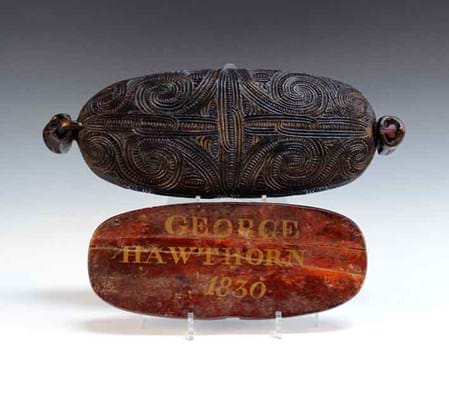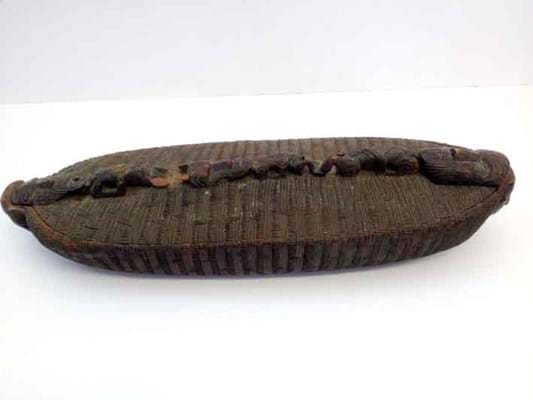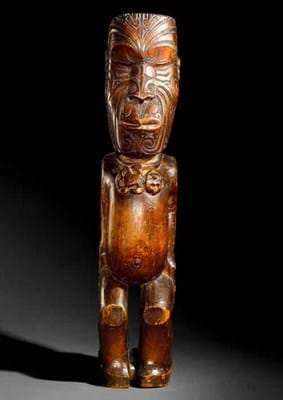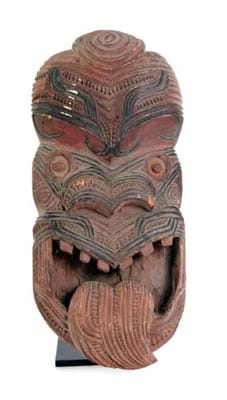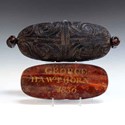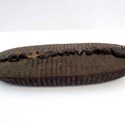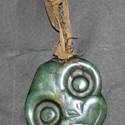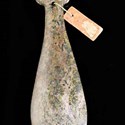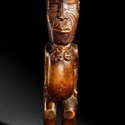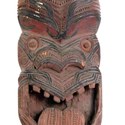That seen at Toovey's (22.5% buyer's premium) of Washington, West Sussex, on June 20 measured 17in (43cm) and was typically carved with curvilinear decoration and to each end with stylised mask handles from which to suspend the box from the low ceilings of a Maori house.
To the underside of the lid (now broken in two pieces) was the inscription George Hawthorn 1830 - perhaps the original Western recipient and an indication of the date of this particular box. Estimated at a very buyable £1000-2000, it took £8500.
The waka huia seen just four days later at Cottees (15% buyer's premium) of Wareham had been brought in by a local couple who had seen a similar item valued recently on The Antiques Roadshow.
In the possession of the vendor's family for at least two generations, it had some more pressing condition issues - with two of the three figures that form a crest to the lid having suffered particularly badly - but international bidding ensured that the price flew over the £600-800 estimate. It sold via the internet at £3100.
Delicately carved waka huia were used to contain the 'tapu' or sacred huia bird feathers, combs and ear jewellery touched and worn by Maori chiefs. As they were designed to be hung out of the reach of children, they are carry as much decoration on the underside as they do to the lid - as can be seen in both these examples.
Maori Culture
Equally emblematic of Maori culture is the jadeite or greenstone hei tiki, the figural pendants associated with fertility and the ancestors.
Tiki, like waka huia, were seen and collected by Captain Cook's crew, but their 19th and 20th century popularity both with the Maori and western collectors means they are notoriously difficult to date.
The example seen at Moore Allen & Innocent's (18% buyer's premium) sale in Cirencester on June 6 came from a promising source. It was given to the vendor's family by Lady Rose Talbot de Malahide, the last chatelaine of Malahide Castle in Dublin and, from 1976 until her death in 2009, resident of a mid-19th century colonial villa (also called Malahide) situated between the South Esk and Break O'Day Rivers in Fingal, Tasmania.
Her hei tiki was not in the best condition (the lower left section had broken off and was missing), but it retained its original plaited flax suspension cord secured with a bone toggle - typically made from albatross wing-bone. That rare survival sent it to £5800 (estimate £800-1200).
Maori artefacts made up the closing moments among 660 lots at Woolley & Wallis' (22% buyer's premium) dedicated Tribal Art sale on June 19.
A greenstone hei tiki with inset red wax eyes that had been purchased in the early 1970s from Bortignon's Antiques, Sydney, was followed by a 15in (37cm) long greenstone hand club or patu carved with a tiki to the terminal. It had the remains of an old label. These both performed well above hopes, taking £3200 and £5500 respectively.
Carved Figure
Estimated at £5000-7000, but sharing the top price of the sale at £13,000, was a carved house post figure or poutokamanawa of a type that were designed to support the main ridge-beams of Maori meeting houses.
House posts typically depict ancestral figures, this example standing just under 3ft (90cm) tall, incised with facial tattoos and carved with both a large hei-tiki suspended from the neck and a prominent navel. They are considered to be the link between the living and the spirit world. It had entered the vendor's family in the 1930s after it had been bought at auction in or near Manchester.
A 13in (33cm) Maori wood mask with notch and line carved decoration and black and red finish that would have once attached to the gable end of a house sold for £1400 (estimate £200-300).
It likely depicts an ancient warrior engaged in a war dance, his tongue thrust out in defiance of his people's enemies.


